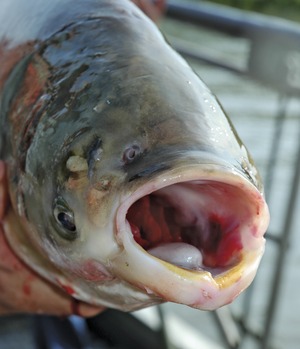
Environmental groups that are monitoring the migration of Asian carp to the Great Lakes region are hopeful that a recent plan by the U.S. Army Corps of Engineers will accelerate the timetable for keeping the aggressive species out of the lakes.
Officials from the administration and the U.S. Army Corps of Engineers told reporters on May 8 that they planned to give Congress and the public a chance to comment on a planned permanent solution by the end of 2013, two years earlier than expected. The shortened time period could mean an earlier start to the fix. "We felt a sense of urgency about this," according to Jo-Ellen Darcy, assistant secretary of the Army for Civil Works.
Matt Doss, policy director for the Ann Arbor, Mich.-based Great Lakes Commission, agrees on the urgency of the solution. "We need to coalesce around and agree upon the best alternative for the Great Lakes so we can move forward to implementation," he says.
If the carp infiltrate the Great Lakes via the Chicago Area Water System, the invasive species would flourish at the expense of other aquatic life, experts say.
The Great Lakes Commission and other groups support physical, hydrologic separation of the Great Lakes from the Mississippi River in the Chicago area, where rivers and canals create an artificial connection between the two watersheds. The commission released a study in January that showed that hydrologic separation is feasible.
Darcy said congressional and public support are critical, and any solution involving construction overseen by the Corps of Engineers would require congressional authorization as well as subsequent appropriations.
Doss observes that pressure from U.S. lawmakers from the Great Lakes region likely contributed to the decision to accelerate the process.
Based on legislation introduced by Sen. Debbie Stabenow (D-Mich.) and Rep. Dave Camp (R-Mich.), an amendment that would have required a plan to be completed within 18 months passed the Senate Appropriations Committee on April 26. Doss says the next step is to study potential financing mechanisms for a solution, which could cost billions of dollars.


Post a comment to this article
Report Abusive Comment